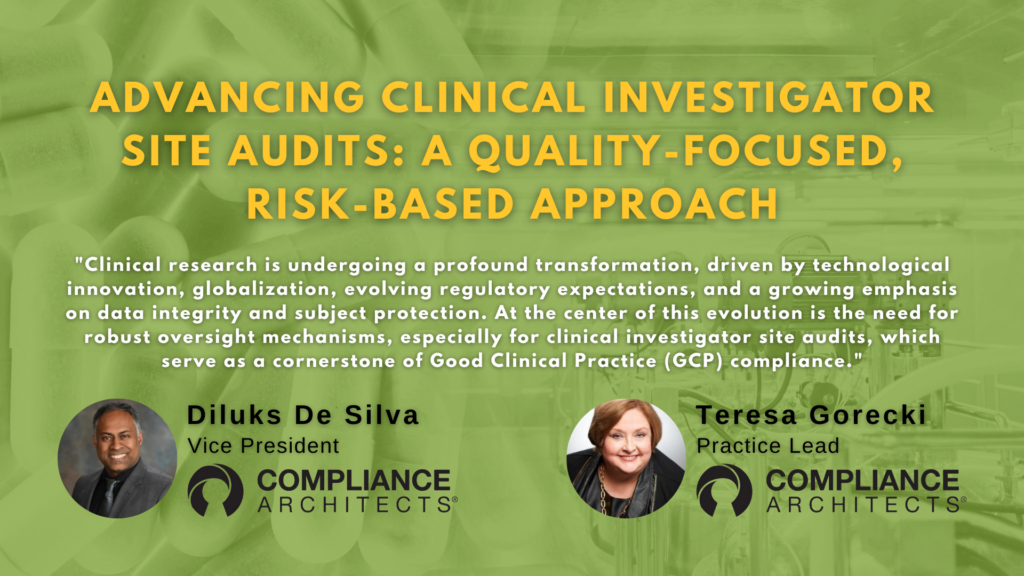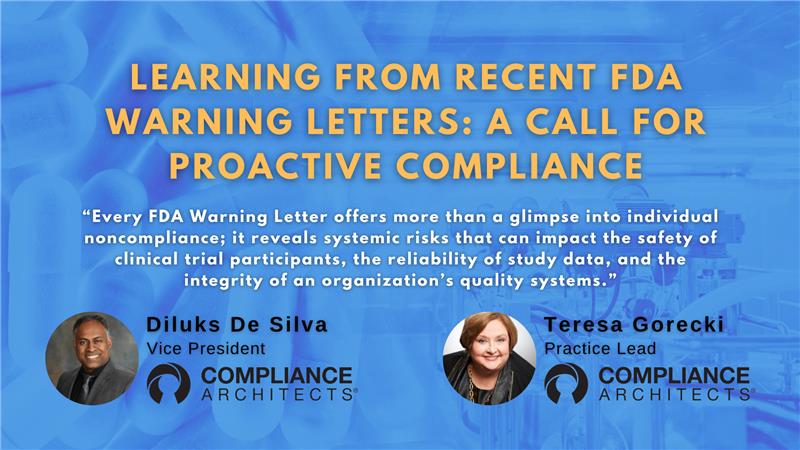Informed consent is not a checkbox. It’s not merely a form signed and filed. It is a living, ethical, and regulatory process rooted in the foundational values of autonomy, transparency, and respect for individuals.
As clinical research grows more complex and diverse, with digital platforms, decentralized trials, and global recruitment, the principles of informed consent remain essential to protecting human subjects and upholding public trust.
Ethical Roots and Legal Foundations
Protecting research participants isn’t just a regulatory requirement; it is a moral imperative. While regulations such as the Common Rule (45 CFR 46) and FDA regulations (21 CFR Parts 50 and 56) provide structured guidance on the informed consent process, the essence of informed consent lies in the timeless question: What is the right thing to do?
These frameworks are reinforced globally by the ICH E6 Guideline for Good Clinical Practice, which emphasizes the ethical and scientific quality of clinical trials and the protection of human subjects. Together, these regulations establish informed consent as both a legal mandate and a moral obligation, ensuring that research is scientifically valid and respectful of individual rights, autonomy, and dignity.
The concept of informed consent has evolved over time. Early 20th-century legal cases like Mohr v. Williams (1905) and Schloendorff v. Society of New York Hospital (1914) laid the legal groundwork for patient autonomy. The term “informed consent” was first publicly used in the landmark Salgo v. Leland Stanford Jr. University case in 1957, emphasizing the patient’s right to understand risks before a procedure.
The Nuremberg Code and Belmont Report later solidified the ethical foundation of consent, requiring not only disclosure of risks and benefits but also voluntariness and respect for human dignity.
What Informed Consent Really Means
According to the FDA’s August 2023 guidance—Informed Consent Guidance for IRBs, Clinical Investigators, and Sponsors (FDA Guidance Document)—informed consent is a process, not a paper. It is a continuous, participant-centered dialogue that begins before enrollment and extends through the conclusion of a participant’s involvement in the study.
The guidance reinforces that informed consent:
- Begins with recruitment and continues throughout the life of the study
- Requires precise and understandable communication to enable truly informed decision-making
- Must be free of coercion, pressure, or exculpatory language
- Is documented initially, but not fulfilled by a signed form alone
As detailed by Ann Meeker-O’Connell in the FDA’s 2024 Clinical Investigator Training presentation, informed consent “is not just a signature or a document” but a multifaceted process that:
“Involves providing a potential participant with relevant information, in a way that facilitates understanding, allows sufficient opportunity to ask questions and consider participation, and assures continued agreement throughout participation.” (Slide 6, Meeker-O’Connell, 2024)
This process ensures participants fully understand:
- The purpose, procedures, and duration of the research
- The risks and potential benefits
- The alternatives to participation, if any
- Their right to withdraw at any time, without penalty
- How will their privacy, data, and safety be protected
- Any costs, compensation, or consequences of withdrawal
These elements align with the legal requirements under 21 CFR 50.20 and 50.25, which mandate that informed consent be obtained prospectively, using language understandable to the subject, and without undue influence or coercion.
The guidance also supports innovative approaches such as electronic informed consent (eConsent), key information summaries, and visual or digital enhancements to promote comprehension, especially for diverse or vulnerable populations.
In sum, the FDA’s modern stance on informed consent emphasizes that the process is relational, not transactional, rooted in transparency, mutual respect, and ethical engagement from start to finish.
Key Elements of Informed Consent
Federal regulations (21 CFR Part 50, 45 CFR Part 46) outline essential elements that must be clearly communicated:
- Study purpose, duration, and procedures
- Potential risks and benefits
- Alternatives to participation
- Confidentiality protections
- Compensation for injury
- Contact information
- Right to withdraw
- Future use of biospecimens or data
Importantly, the informed consent process must be understandable to the participant, free from coercion, and include no exculpatory language.
Special Populations Need Special Protections
Certain groups—children, prisoners, pregnant women, those with limited comprehension, or those who face social or economic disadvantage—may be vulnerable to coercion. IRBs must implement additional safeguards when these populations are involved, ensuring equity and respect for their unique circumstances.
When Consent Can Be Waived
In limited circumstances, IRBs may waive the documentation requirement for consent. This typically occurs when:
- The only link to the subject is the consent form, and disclosure could cause harm
- The study involves minimal risk and doesn’t usually require written consent
- The cultural norms of the population involved discourage signing documents
However, a documented process for obtaining verbal consent is strongly recommended even in these situations.
The Right to Withdraw: A Pillar of Autonomy
Participants may withdraw from the research at any time. Investigators and IRBs must respect this decision, document it properly, and ensure safety follow-ups if needed. Withdrawal does not necessarily require deletion of previously collected data, unless the participant explicitly revokes permission under applicable laws (like HIPAA).
The Roles of Investigators, Sponsors, and IRBs
- Investigators are responsible for ensuring the consent process is thorough, comprehensible, and legally compliant.
- IRBs must review and approve all consent materials, ensure readability, and monitor version control and consistency with the approved protocol.
- Sponsors must ensure that consent forms are appropriate across study sites and that technical and ethical standards are met, especially in multicenter studies.
Why The History of Informed Consent Matters for Institutions Today

The stakes have never been higher for healthcare organizations, academic medical centers, and research sponsors. Trust in research, regulatory compliance, and public accountability is all on the line. Institutions that fail to implement robust and ethical informed consent practices risk:
- Regulatory sanctions from the FDA or OHRP
- Loss of funding from federal agencies and grantors
- Damage to their reputation and community trust
- Legal liability from participants who were inadequately informed
- Erosion of research quality due to participant misunderstanding or withdrawal
Moreover, in a world increasingly focused on health equity, digital access, and patient empowerment, informed consent is vital for demonstrating an institution’s commitment to transparency, inclusion, and ethical conduct.
The ICH E6(R3) updates reflect a global shift towards more ethical, flexible, and participant-focused clinical research practices. For institutions, this means:
- Enhanced Compliance: Aligning with E6(R3) ensures adherence to international standards, reducing the risk of regulatory non-compliance.
- Improved Participant Trust: Transparent and comprehensible consent processes foster trust among participants, which is crucial for recruitment and retention.
- Adaptability to Modern Trial Designs: The flexibility in consent methods accommodates decentralized and digital trial models, expanding research capabilities.
- Strengthened Ethical Standards: Focusing on ongoing consent and consideration for vulnerable populations reinforces the institution’s commitment to ethical research practices.
Institutions prioritizing meaningful consent processes are better equipped to build enduring trust, attract research participants, and lead ethically in a competitive research landscape.
By continuing to refine our consent practices, elevate ethical standards, and hold ourselves accountable, we ensure research advances science and respects those who make it possible.
In an era where health equity, participant diversity, and digital access are front-and-center, informed consent also publicly demonstrates an institution’s commitment to inclusion, transparency, and accountability.
Conclusion: Informed Consent Is a Living Commitment
Informed consent is not static. It is a dynamic, ethical, regulatory framework supporting participant rights and scientific integrity. As research becomes more global, diverse, and data-driven, we must remember that the heart of informed consent is simple: respect for people. Whether it’s a lengthy clinical trial or a brief observational study, the consent process should be an act of partnership, not paperwork.
Institutions that prioritize meaningful, modernized consent practices will meet regulatory expectations and stand out as ethical leaders in an increasingly complex clinical research landscape.
Our Takeaway at Compliance Architects®
At Compliance Architects®, we view informed consent as a regulatory obligation and a strategic pillar of trust, transparency, and ethical leadership in research.
As FDA’s updated guidance and ICH E6(R3) raise the bar for participant-centered, risk-proportionate, and dynamic consent processes, institutions must respond—not with more bureaucracy, but with more intelligent systems and more substantial alignment between compliance and culture.
Contact us using the form below.





